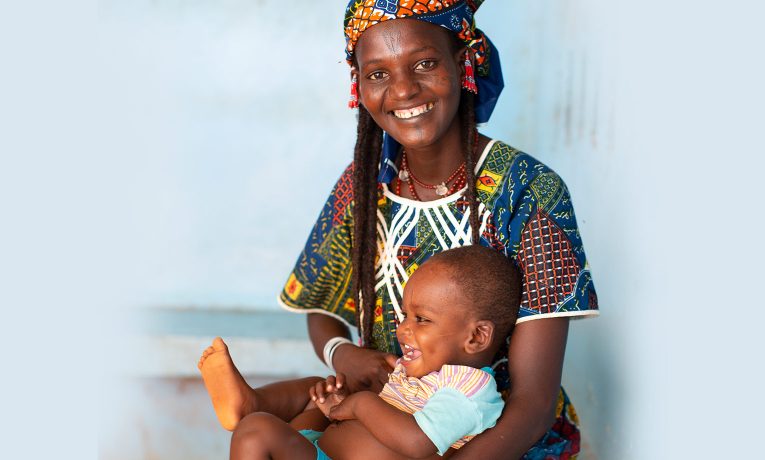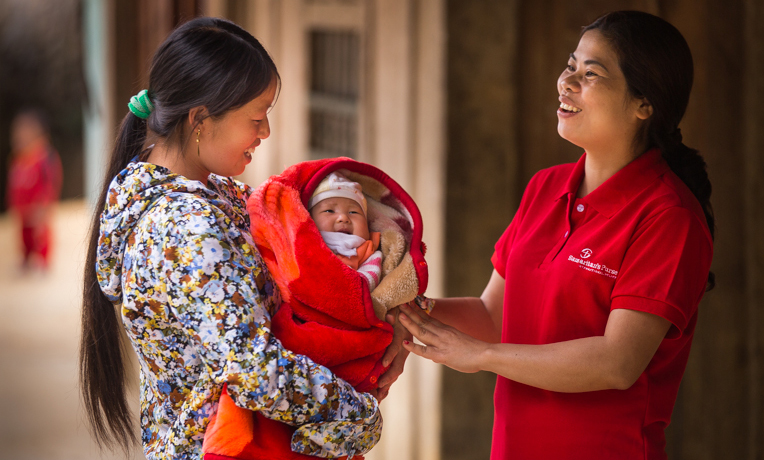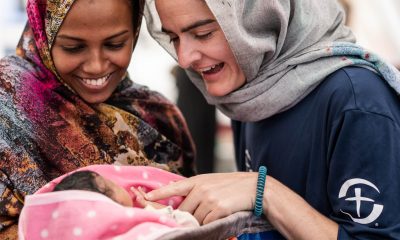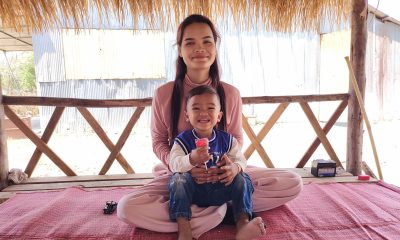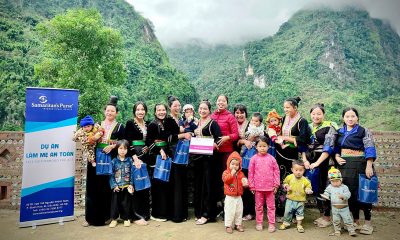A training program for traditional birth attendants is helping mothers-to-be in the remote highlands have healthy babies
Minh was still a teenager when she delivered her first child, a daughter, three years ago. She had no one to give her medical advice during the pregnancy. Surrounded by only her mother and husband, she gave birth at home in a remote village nestled within the highlands of Lai Chau Province.
The experience proved to be both frightening and bewildering.
“I felt scared a lot and not safe,” said Minh, now 21. “I didn’t know what was happening. The baby just popped out.”
Despite the stress and potential danger, both mother and child recovered well.
Minh’s second pregnancy and childbirth were markedly more positive experiences, thanks to the support of Noi, a traditional birth attendant (TBA) trained through a six-month program sponsored by Samaritan’s Purse.

Minh’s baby girl wakes up and takes a big yawn.
“I tried to help her feel relaxed and breathe smoothly,” Noi said about the delivery.
She succeeded. As Minh recalled, “With the TBA beside me, I did not feel scared.”
When Samaritan’s Purse staff visited with her and Noi in March 2014, Minh’s 3.5-month-old baby girl seemed healthy, happy, and appropriately sleepy.
Help Now and for the Future
Last August, Noi was part of a pilot project between Lai Chau Province and Samaritan’s Purse to increase the level of training for community midwives. A group of 15 young women received three months of theoretical education and three months of clinical training at the district and commune level. They learned about prenatal nutrition and vitamins, proper hygiene, best practices for delivery, safe motherhood, and more.

Noi helped make Minh’s second pregnancy and delivery a safer and more pleasant experience.
On the big day, they accompanied willing mothers-to-be to a clinic, if one was reasonably close, or stayed with them at home where they served as birth coaches during the delivery. These community midwives also administer infant immunizations and tetanus vaccinations to mothers.
Samaritan’s Purse covered the costs of training materials and supplies, as well as trainer salaries, and provided each birth attendant with a sanitary birth kit, which includes gauze, bandages, gloves, antiseptic solution, scissors, blood pressure apparatus, and a thermometer, among a variety of other items. A female Samaritan’s Purse staff member visited with the attendants-in-training about 10 days a month to answer questions, provide encouragement, and demonstrate God’s love to all involved.
Upon completion of their six-month course, trainees became certified, government-paid health workers assigned to their community.
May, a 23-year-old ethnic Dao woman, is a double beneficiary of the program. Not only did she learn the skills to help others in her 100-household village, but also she received important advice through the program during her recent pregnancy. She gave birth in February 2014 to her second child, a baby girl. Her older child, a son, is now 3.
“I got a lot of experience from the TBA program,” she said. “I learned how to take care of myself and eat properly.”

May holds her second child outside her home. She benefited from having the baby while also taking classes to become a traditional birth attendant.
Her reason for enrolling in the training program is quite straightforward: “Because I just want to help the sisters in my village give birth.”
May’s husband and her village support her education. Mrs. Dao, a 45-year-old neighbor, said birth attendants like May can help make pregnancy and childbirth safer for future generations like her own granddaughter.
Lives at Stake
Maternal health is a serious issue in Vietnam, with critical needs in the poorest and most rural regions where many ethnic minorities won’t seek care at local clinics. The maternal mortality rate for the country of Vietnam was listed by the World Fact Book at 54 per 100,000, according to the most recent statistics. By comparison, that figure was just 21 per 100,000 in the United States, 12 per 100,000 in Canada and the United Kingdom, and seven per 100,000 in Australia.
The situation becomes even bleaker in the remote northern highlands region. In Lai Chau, the second poorest province in Vietnam, the maternal mortality rate was 95 deaths per 100,000, as reported by the provincial reproductive health center in 2012. In Sin Ho District, where the Samaritan’s Purse pilot program began, the rate was 147 per 100,000.
 “We have desired to have this type of program for a long time,” said Vi Van Cuong, director of Sin Ho’s health department. “To get Samaritan’s Purse’s financial and technical support is great for the district. I’m very happy and the district’s people’s committee is very supportive of this program.”
“We have desired to have this type of program for a long time,” said Vi Van Cuong, director of Sin Ho’s health department. “To get Samaritan’s Purse’s financial and technical support is great for the district. I’m very happy and the district’s people’s committee is very supportive of this program.”
Hemorrhaging at childbirth, post-delivery infections, and pre-eclampsia/eclampsia (related to high blood pressure during pregnancy) are the most common causes of maternal mortality. As the attendants monitor pregnant women throughout their term, they are able to identify risk factors (hypertension, edema, anemia, smaller size, etc.) and recommend appropriate responses, including seeking more advanced medical care.
During the actual delivery, these health workers are also able to identify abnormalities quickly and make necessary interventions as possible, up to seeking emergency transportation to a district or provincial hospital.
These actions can save women’s lives and the lives of their babies too. The need for more traditional birth attendants, or female community health workers, in the highlands of Vietnam is truly great, and Samaritan’s Purse recently expanded the program to Phong To District, also in Lai Chau Province. Today 15 more students are being trained there.
